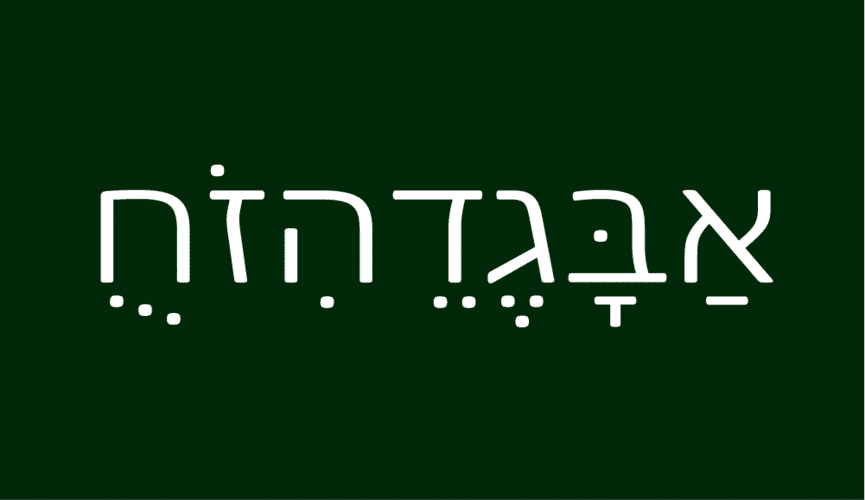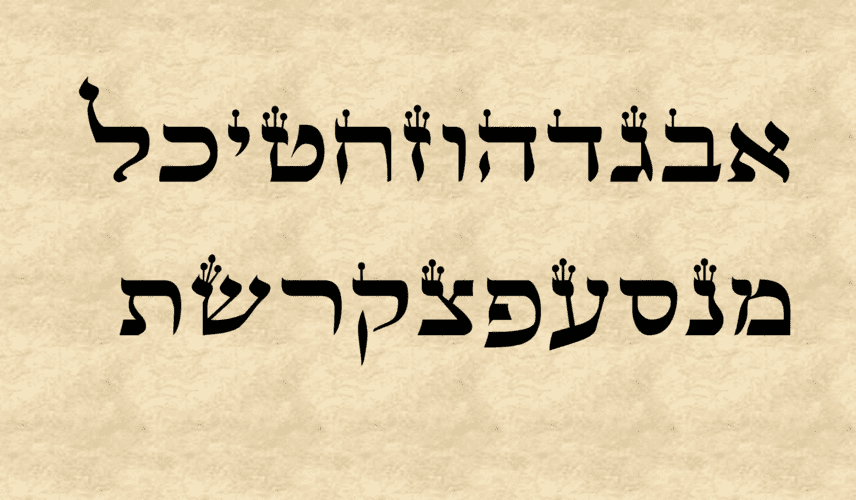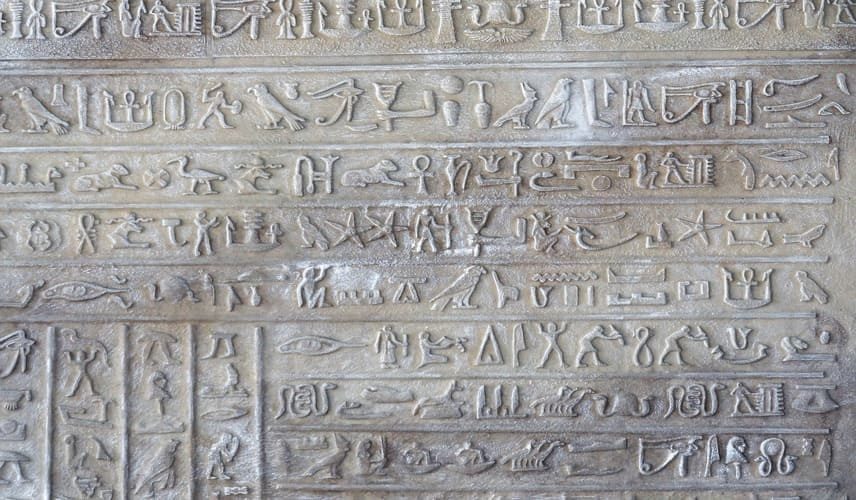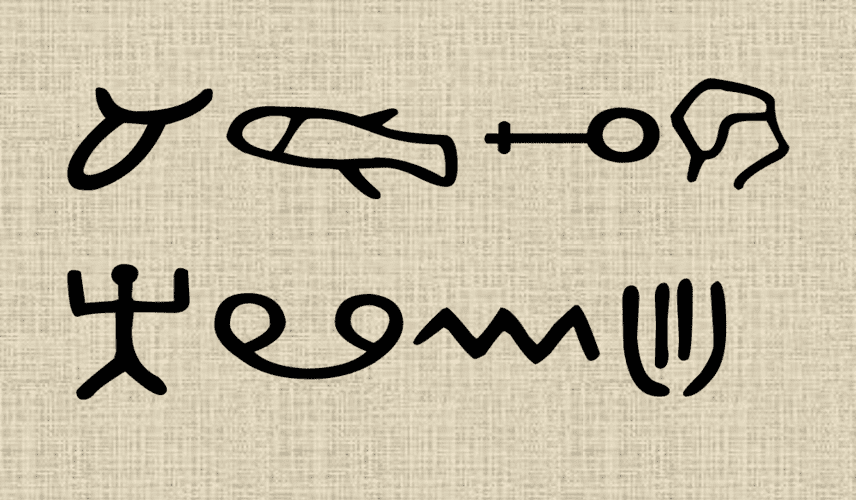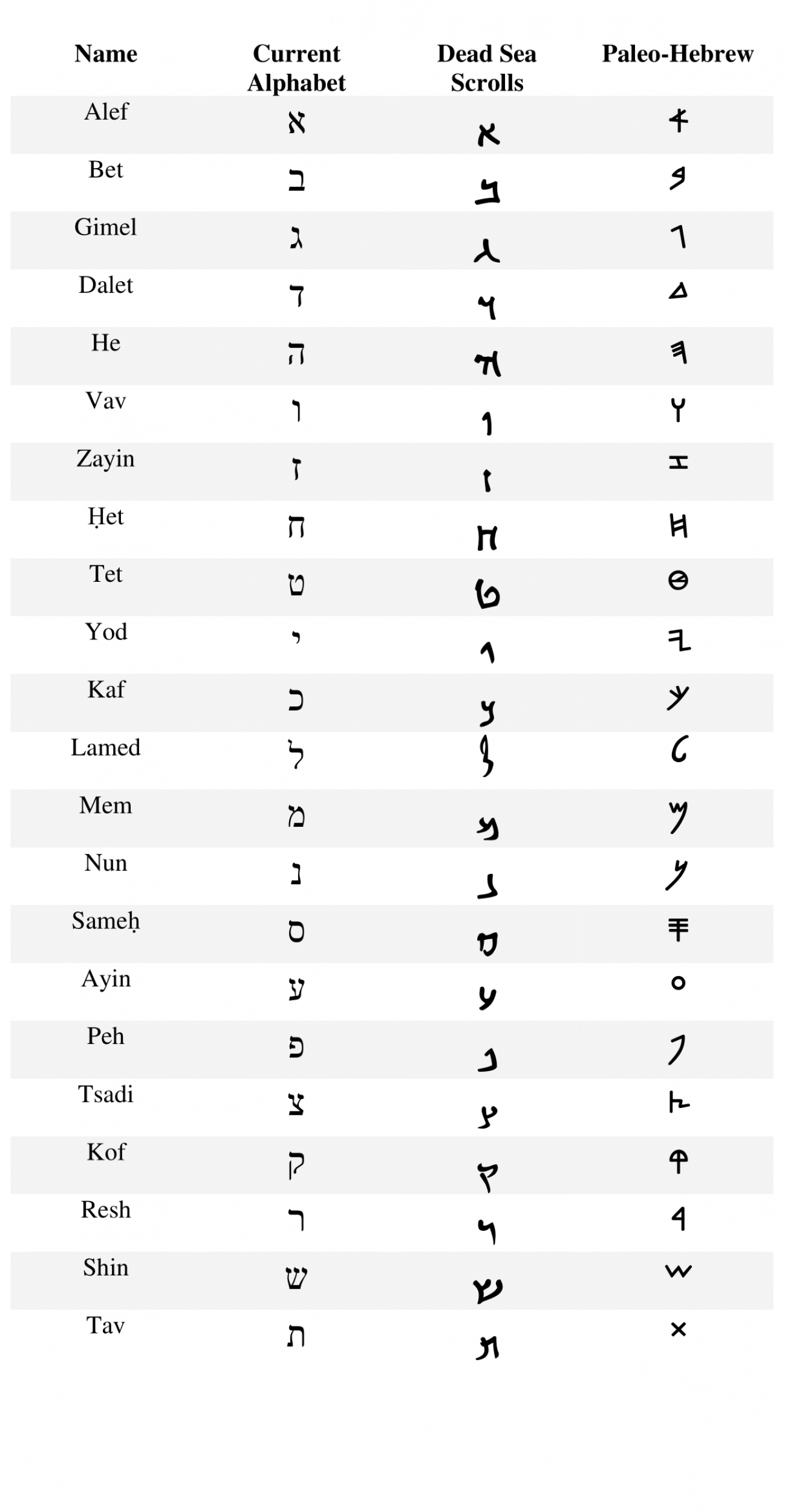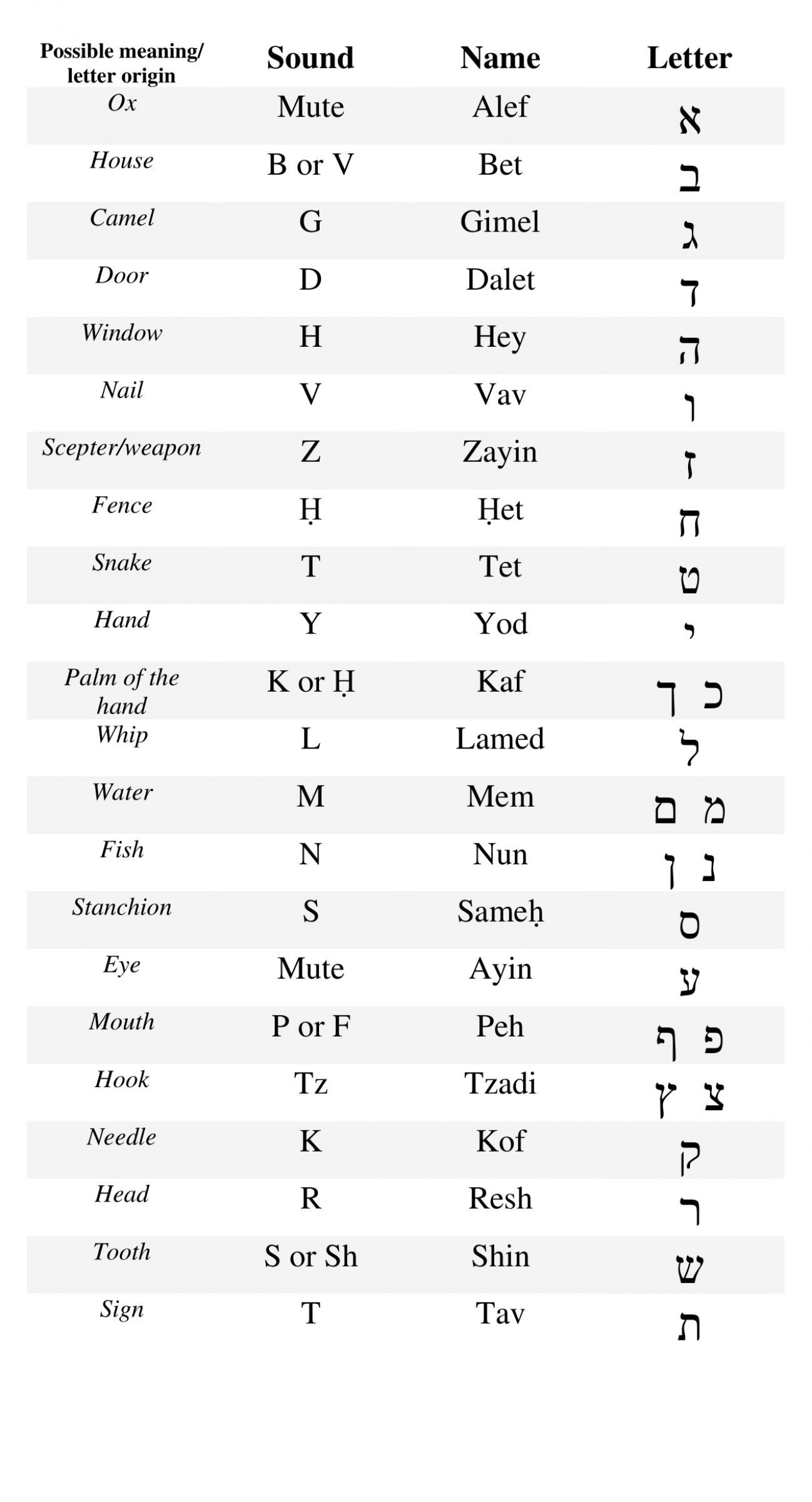Hebrew vowels are represented by signs that are not part of the alphabet. In fact, vowels are not originally written in Hebrew language (they are pronounced, but not written).
However, at some point a solution was created to this barrier, that is, the absence of vowels, which could have jeopardized the preservation of the Hebrew language and the original biblical text. In this article you will understand how the Hebrew vowel signs work, what they are and how they came to be.
How is it to read a text without vowels
In the previous article we talked about the Hebrew alphabet. We saw that the Hebrew letters were created to represent sounds, but only consonants sounds (except in some special cases).
Making an analogy, if we take the verses of Genesis 1: 1 and 2, of the example of the previous article, and write them in English without vowels, as it is in Hebrew, it would look something like this:
“IN TH BGINNNG GD CRTD TH HVNS AND TH ERTH. NW TH ERTH WS FRMLSS AND EMPTY, DRKNSS WS OVR TH SURFC OF TH DP AND TH SPRT OF GD WS HVRNG OVR TH WTRS”.
It would be a little difficult to read, especially for someone who doesn’t speak English. This is exactly what happens in Hebrew. Words are written without vowels, and only those who can speak the language fluently can read it correctly.
For those beginning to learn to read Hebrew it would be very difficult – in fact quite impossible, to pronounce the words correctly.
There was a time when Hebrew was no longer a language spoken. Jews lived in many countries around the world, and hardly anyone spoke the language fluently.
Hebrew became a “liturgical” language; it was used only in prayers, songs and readings in the synagogue. It was already getting difficult for most people to be able to read the Torah in Hebrew, because nobody knew how to pronounce it properly, only the most educated people.
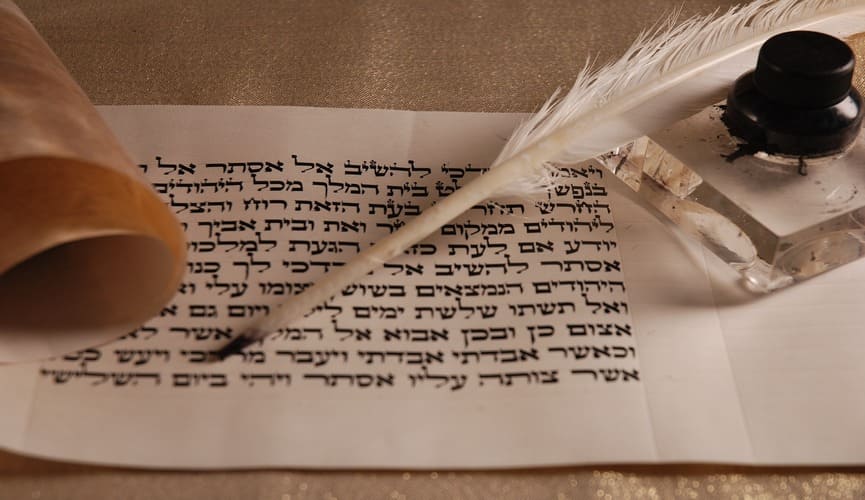
The Masoretes
Finally, a group of scribes, called Masoretes, who knew the Hebrew language and the biblical text very well, took action to preserve the pronunciation of the Hebrew and the correct understanding of the biblical scriptures. This occurred more or less around the sixth century.
They decided to create signs to represent the Hebrew vowels. They didn’t create new letters, so as not to alter the original writing of the words; they just added these signs, which were dots and dashes around the words. These signs are called “Nekudot” (dots), or Masoretic signs.
A sign was created for each vowel and they were placed on the existing letters. Thus, the pronunciation of the sacred texts, and consequently the Hebrew language, were preserved, and people who did not know how to speak fluently began to be able to read the texts with ease.
Imagine now how that English text used as an analogy would look like with added small symbols that represent vowels. Could look something like this:
“IN THe BeGINNiNG GoD CReaTeD THe HeaVeNS AND THe EaRTH. NoW THe EaRTH WaS FoRMLeSS AND EMPTY, DaRKNeSS WaS OVeR THe SURFaCe OF THe DeeP AND THe SPiRiT OF GoD WaS HoVeRiNG OVeR THe WaTeRS”.
Now it’s much easier to read. Anyone who is not a native English speaker could learn to read a text like this. All vowels are written – they look different, but they are there.
Finally the writing of the Hebrew vowels – the “Nekudot”
The signs of the Hebrew vowels created by Masoretes are as follows:
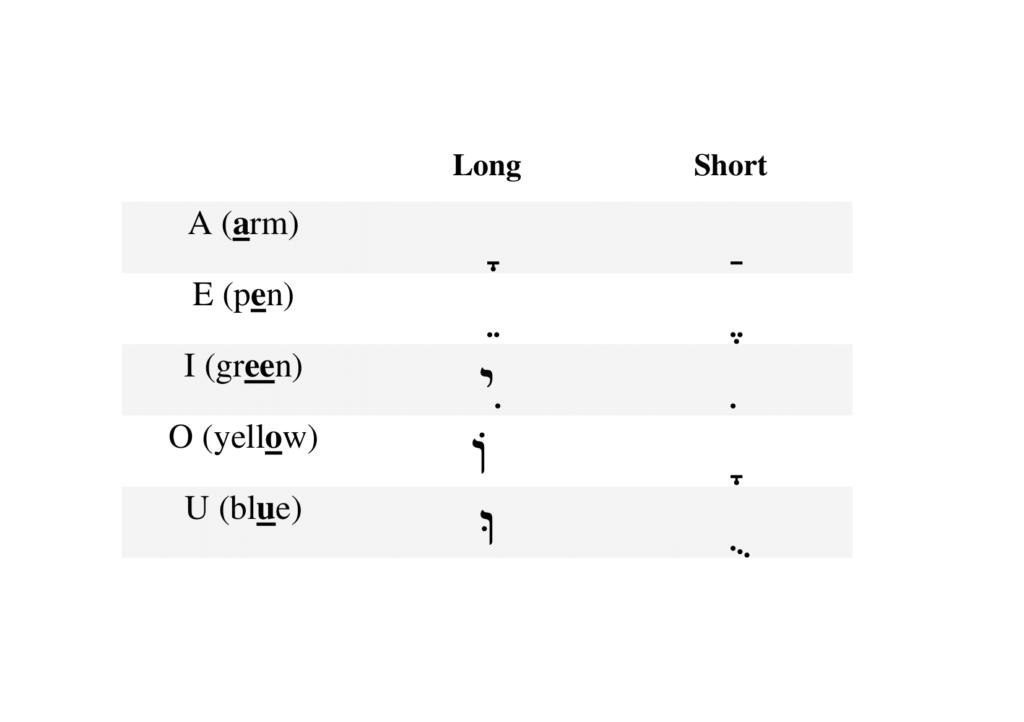
Note that each vowel has two different ways of representing: One is called a long vowel, and the other is a short vowel.
Very strict grammatical rules were created to make this notation. But in practical terms, nowadays there is no difference in pronunciation between these short and long vowels.
The two A’s have the same pronunciation, the two E’s have the same pronunciation, the two I’s have the same pronunciation, the two O’s have the same pronunciation and the two U’s have the same pronunciation.
In other words, to learn to read, you don’t have to worry about long and short vowels, just to learn the two different symbols that represent each vowel.
These signs have names, but there is absolutely no need to know these names for you to learn to read in Hebrew.
Just out of curiosity, or in case you want to know, these are the names of the Nekudot – the signs of the Hebrew vowels:
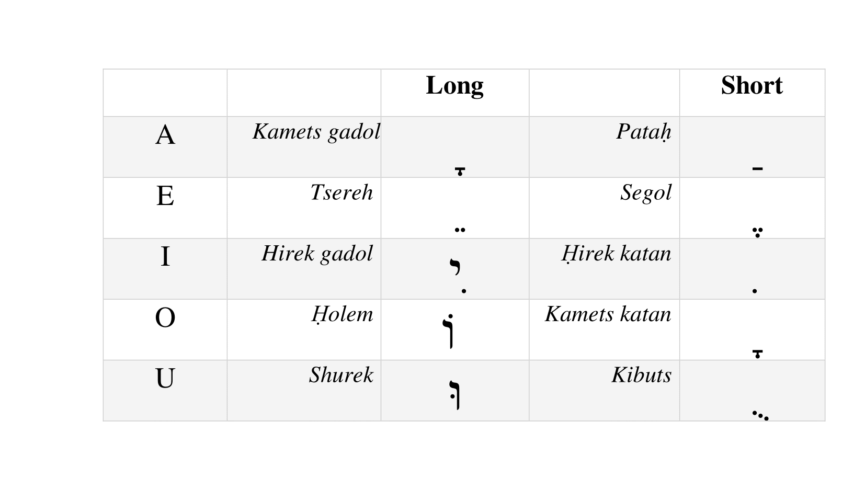
We have yet another sign, which is called “Sh’va”, which are two points, one bellow the other, which is placed under the letter. This sign represents that the consonant has no vowel, or sometimes, depending on the situation, it may have an E sound as well.
ְ
Three of the vowel signs can also appear with an addition of the two points on the side (the “sh’va”); forming what is called a “semivowel” – which, again, does not interfere with anything in the pronunciation – is just a grammatical detail.
ֲ a
ֱ e
ֳ o
In short, we have one more way of representing A, E and O, but they are not pronounced differently.
How Hebrew Vowel Signs Work
The signs are placed under the letters. Just add the sound of the letter (which is a consonant) with the sound of the vowel and form the syllables.
For example, the letter “Nun”, which sounds like N,
נ
added to the vowel A, which is a dash below the letter, looks like this:
נַ
This syllable we pronounce NA (with the “A” same as in “father”).
If we put the vowel E, which are two dots below the letter, it looks like this:
נֵ
This syllable we pronounce NE (with the “E” same as in “pen”.
And so on … we can put any vowel for each letter.
Two letters of the alphabet can make vowel paper: The letter Vav ו, and the letter Yod י.
The vav with the dot at the top has the sound of “O” as in “yellow”, and the vav with the dot at the bottom has the sound of “U” as in “blue”. And the letter Yod has the sound of “I” and in “green”.
נוֹ NO
נוּ NU
נִי NI
These signs have remained to this day, and they are what enables anyone to learn to read Hebrew.
However, these signs are used only in Bibles, Jewish liturgical books, and other traditional texts.
It turns out that Hebrew was restored as a living language by the Jews, and today it is the official language of Israel. Since people use the language, and know it fluently, vowels are no longer needed.
For this reason, in Modern Hebrew, vowel signs are not written. The language is written in the traditional way, only consonants.
Only in textbooks and children’s books are vowels placed, serving to help those who are being literate, in addition to religious books, as Bibles, which are also used by people who do not speak Hebrew fluently.
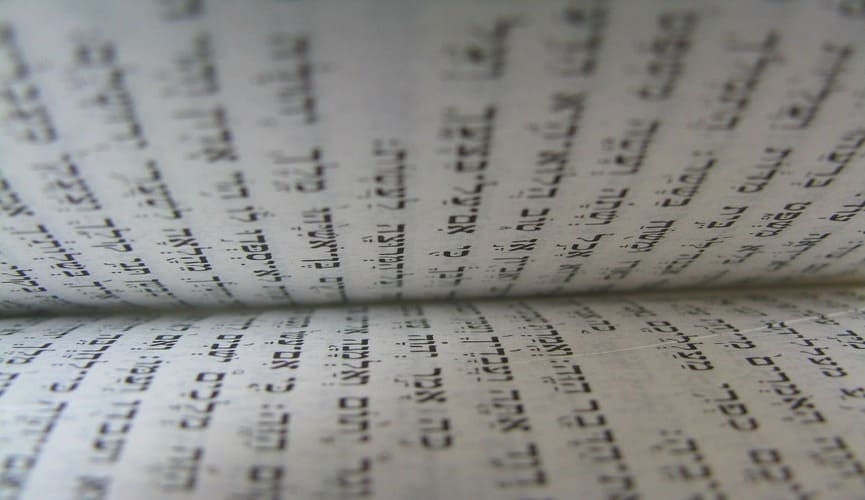
In the Torah scrollsְ, which are scrolls still traditionally handwritten and used in synagogues, the vowels also do not appear. The text appears in the traditional way.
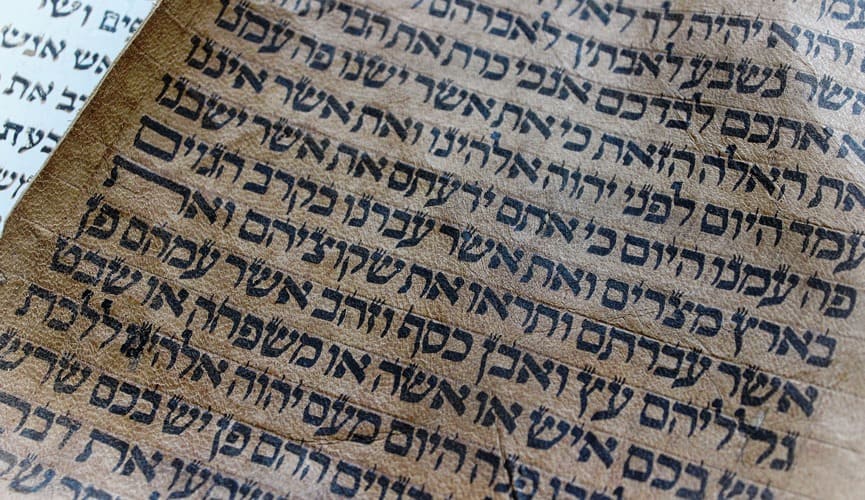
However, in printed Hebrew Bibles, vowels will always be there to help.
If you want to learn to read in Hebrew, you can start right now by watching the first lesson in the series of 11 lessons I prepared, where I teach step by step, in a very practical and simple way, to read each syllable. Watch the first lesson here, and start learning to read and write in Hebrew.

The difference between Biblical Hebrew and Modern Hebrew
A question I often get asked is the difference between Biblical Hebrew and Modern Hebrew. First, we must know that whether biblical or modern, we
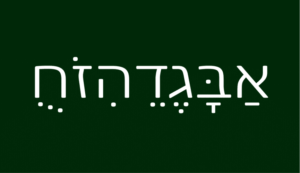
The Hebrew vowels
Hebrew vowels are represented by signs that are not part of the alphabet. In fact, vowels are not originally written in Hebrew language (they are

The difference between Hebrew and Aramaic
In this article we are going to talk about another frequently asked question: What is the difference between Hebrew and Aramaic languages? As a simple starting
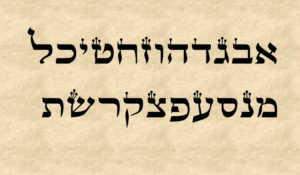
The Hebrew Alphabet
The Hebrew language is written with an alphabet quite different from the one we use in English. The “alef-beit”, as the Hebrew alphabet is known,

